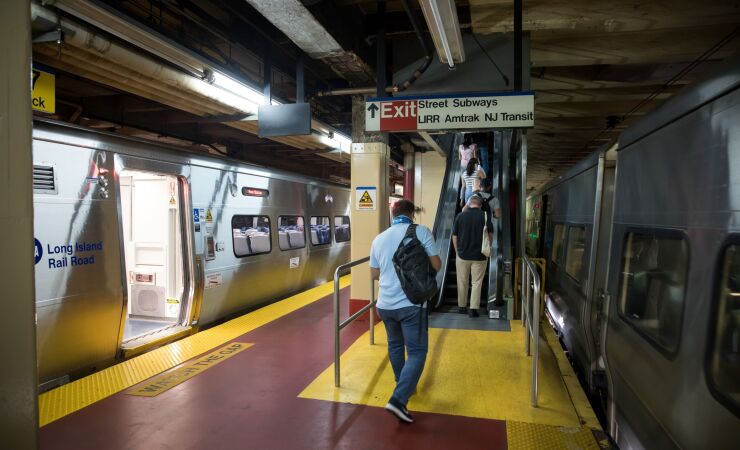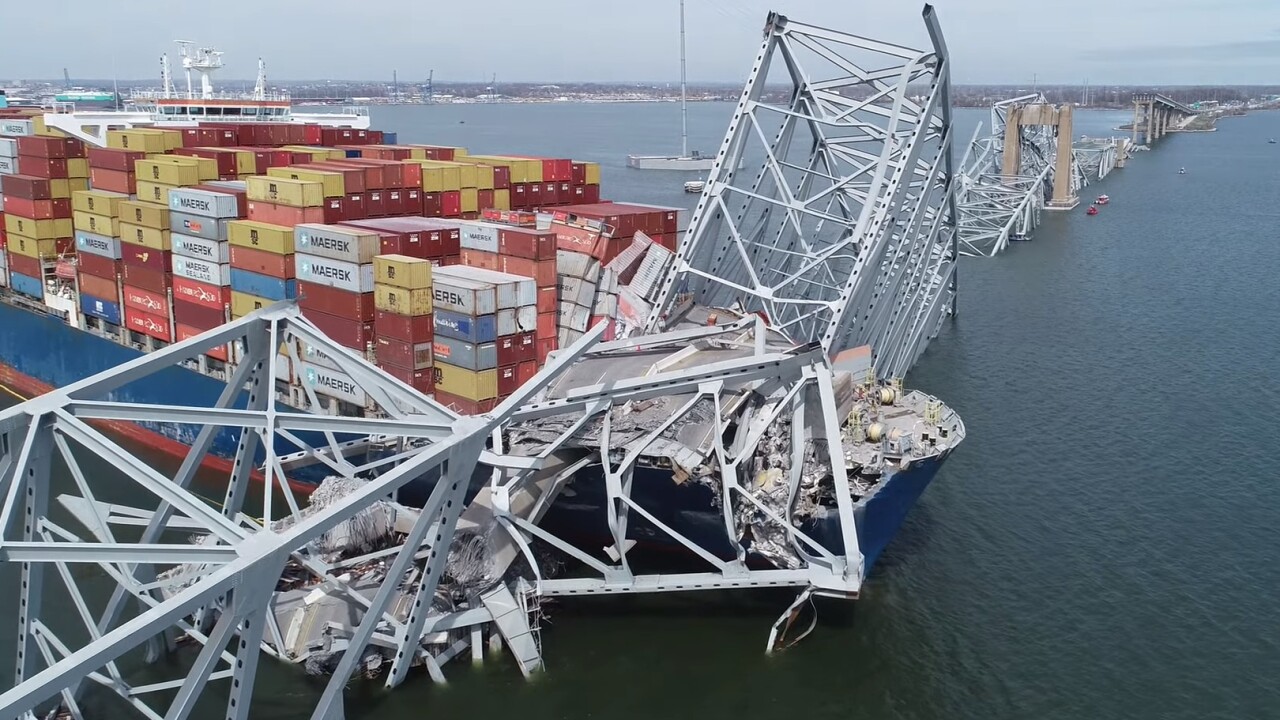Sam Turvey and his ReThinkNYC civic organization have been battling powerful and entrenched transit and real-estate interests in their push to include through-running commuter trains as part of New York’s Penn Station modernization.
More broadly, they and others are calling on Gov. Kathy Hochul to re-examine the

Cuomo's resignation amid a sexual-harassment scandal put a fresh face in the governor's office this week.
“We want her to give this a fresh look, and come on it without a finger on the scale or that age-old song about look, we’re ready to get the funding, let’s do this and we’ll figure it all out later,” said Turvey, chairman of ReThinkNYC, an amalgam of preservationists, grass-roots community organizers and opponents of the project as presented.
“There have been a lot of infrastructure projects that went through in New York City based on that kind of thinking, and we’re still paying the price for it.”
Quasi-public rail operator Amtrak owns the station, a major hub for its through-running trains along the Northeast corridor. Penn is an end point for NJTransit and the Metropolitan Transportation Authority’s Long Island Rail Road trains, with the MTA targeting Metro-North Railroad access by 2025.
ReThinkNYC argues that through running could increase capacity and create economic hubs in areas including Sunnyside, Queens, and Newark, New Jersey, while costing fewer capital dollars. Rising cross-commuting trends, they said, warrant the undertaking.
The group estimates that through-running and outside work would cost $9.75 billion, as opposed to $17.7 billion — acquisition and construction costs combined — for both Penn South real estate and the station work under the Cuomo plan.

Hochul
The station, shoehorned under Madison Square Garden when the arena’s most recent iteration opened in 1968, has been one of New York’s most loathed pieces of infrastructure along with LaGuardia Airport and the Brooklyn-Queens Expressway.
It is cramped, airless and confusing to navigate — in sharp contrast to the grandeur of its predecessor, Pennsylvania Station, demolished in 1964 to make way for the sports arena.
A late amendment to New York State’s $212 billion fiscal 2022 budget restricted $1.3 billion of bonding for the Empire Station Complex to transportation expenses, “and not for above-grade development contemplated in the general project plan.”
Still, other sources of state-authorized funding could be available for high-rise developers, such as a value capture using a payment-in-lieu-of-taxes structure.
ReThinkNYC, without identifying funding sources, said the $9.75 billion would involve $4.5 billion to reconstruct track alignments and platforms at Penn Station and $2.175 billion for system improvements beyond the Gateway program, a long-delayed federal and state undertaking to repair and place tunnels connecting New Jersey and Manhattan.
The balance would cover work east of the New York Penn yard and new stations at Sunnyside and Port Morris, and a cross-Bronx tunnel.
ReThinkNYC also disputes the argument by transit officials that certain tracks would not enable through-running.
Through-running trains “would represent a quantum leap forward in regional mobility for the entire tri-state region,” said ReThinkNYC senior analyst Barry Caro. “It would allow the types of trips in this region that are simply impossible in mass transit today, and it would make them as easy as taking the subway is in Midtown Manhattan.
“Everywhere from Montauk to Bay Head, everywhere from Trenton to New Haven, it would completely change how people there are able to get around. All you have to look at is traffic on the Cross-Bronx Expressway at rush hour to know there’s a lot of people who are trying to get from New Jersey across this region, not just to Midtown Manhattan.”
Successful worldwide examples of through-running, Caro said, include Paris, which integrates its Metro subway system with its Réseau Express Régional, or RER network; and Philadelphia, which connected legacy subway lines with two main commuter rail routes.
The operating procedure is standard for commuter rail in most large German cities.
New York infrastructure expert Nicole Gelinas is warm to the concept.
“If we’re going to spend tens of billions of dollars, do we want to rethink — if I can steal their word — how we re-do commuter rail and have connections between New Jersey and Queens and treat commuter rail more like Paris, and its stations could be auxiliary subway stations,” said Gelinas, a senior fellow at the Manhattan Institute for Policy Research.
Through-running proposals have surfaced periodically.
Transit historian Peter Derrick, a planner and assistant director at the MTA from 1982 to 1996, pitched the idea in 2013 before New York University’s Robert F. Wagner Graduate School of Public Service.
Tribalism among NJTransit, LIRR and Metro-North is a major obstacle, Derrick said. The latter two, though under the MTA’s umbrella, have long feuded. For instance, LIRR’s East Side Access project to direct trains to Grand Central Terminal involved building track well below Grand Central’s surface because the two could not agree on track space.
“I worked for MTA for 15 years and saw this going on," said Derrick, author of the book
The turf battles also pose a high barrier to establishing a single, unified coordinating agency.

Through-running must also compete against existing and pending infrastructure megaprojects.
Speaking after a recent MTA board meeting, Janno Lieber, now the authority’s acting chief executive, said through-running would require widening platforms and tearing up some of the work at the Moynihan Hall, the recently opened Amtrak waiting area built out of the former James A. Farley post office across the street from Penn Station.
“We would also have to have more meaningful through-running increases, East River tunnel capacity,” Lieber said. “Right now, the East River tunnels are full. If you are going to use through-running, you would need new tunnels under the East River. Right now we need to fix Penn Station.”
Turvey, in response, accused the MTA, Amtrak, the commuter railroads and the Empire Station Development Corp. of presenting “a steady diet of non- or changing answers.”
Another obstacle is James Dolan, CEO of Madison Square Garden and its holding companies. Dolan, who pays no property taxes on the parcel, has long opposed relocating the Garden.
Through-running trains or not, Hochul is facing pressure to downsize the project, even from a Cuomo-picked advisory committee that includes U.S. Rep. Jerry Nadler, D-N.Y.; state Sen. Brad Hoylman, D-Manhattan; City Council Speaker Corey Johnson; and Manhattan Borough President Gale Brewer.
“It would make a lot of sense for Hochul to take a fresh eye,” Gelinas said. “It’s not her project. It’s the Vornado-Cuomo project.”
As Cuomo’s clout weakened, pushback over his megaprojects began to mushroom. One day after his Aug. 10 resignation speech, the Daily News reported that staffers at the Port Authority of New York and New Jersey asked executive director Rick Cotton to scrap Cuomo’s controversial, $2.1 billion
Former MTA Chairman Patrick Foye, should he remain with Hochul's team, would coordinate the Penn Station project as interim CEO of the Empire State Development Corp. "Time will tell but Pat has been an honest narrator," Turvey said.
The Penn tower proposal comes with Manhattan commercial real estate reeling from the COVID-19 pandemic. Real estate interests such as Vornado, Brookfield Properties and SL Green represent a powerful political lobby.
While transit-oriented development has been trending in recent years, some transit and neighborhood activists in Manhattan worry about force-feeding large-scale developments with transit improvements.
“One of the general problems we see here is that the city has dug itself into kind of a rabbit-hole trap of, ‘The only way we can have any public goods is to build a tower and then finance some future real-estate revenue that we’re going to get once the towers are up.’ A lot of projects are financed that way,” said Lynn Ellsworth, executive director of the advocacy group Human Scale NYC and coordinator of Empire Station Coalition, a broader organization fighting the Cuomo project.
Regionalizing commuter rail, she said, could trigger widespread economic development.
“When people are more prosperous they can pay more taxes and you can issue bonds like a normal state,” she said. “Right now I think the city feels like we can’t do that unless there’s a specific project generating revenue. Well, let the unified regional rail network be that project.”
ReThinkNYC's push has included virtual “town hall” meetings and outreach to elected officials.
“We started out as thought leaders and converting to fact leaders, and we have found that much of what they’ve thrown at us is smokescreen, and I’m not really sure they even fully believe what they’re saying,” Turvey said.
Improved transit, he said, would foster the city’s competitiveness.
“Let’s face it, we compete with other cities, we compete with other regions. There’s a big drain of people to the Southwest. We compete against other financial centers in Europe. We have to fight a multi-front war to be the most relevant city we can be, and this is the right way to do it.
“I’ve taken many soulless commutes in this city, and I resent it.”





